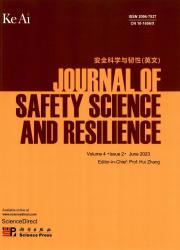Quantitative resilience assessment on critical infrastructures – A systematic literature review of the last decade (2014-2024)
IF 3.4
Q1 PUBLIC, ENVIRONMENTAL & OCCUPATIONAL HEALTH
引用次数: 0
Abstract
The everyday functioning of infrastructures and the capacity of their owners to provide high-quality services are critical to the well-being of communities and societies. When disruptions endanger society's well-being, security, and economy, some of these infrastructures are relevant and, as a result, are designated as critical for an entire nation. Therefore, research has focused on a peculiar infrastructure ability, or capacity, that summarizes these concepts in one word: resilience; its quantification, however, is not straightforward. Many authors have attempted to assess resilience using different subjects, infrastructures, resilience phases, and models. Therefore, through a systematic literature review based on the PRISMA protocol, this work presents an overview of quantitative methods and techniques developed over the past decade to numerically assess the resilience of critical infrastructures (CIs). A total of 111 papers were included in the study, which focused on studies published between April 2014 and April 2024. This article focuses on a model-based classification, highlighting strengths and weaknesses in the proposed methodologies, and performs a SWOT analysis on the modeling approaches identified within the retrieved papers. Future works could be useful to extend this research to those papers that describe and quantify single domains, stages, and features of CIs resilience, exploring the possibility of searching protocols to identify and correctly address them.
关键基础设施的定量弹性评估——过去十年(2014-2024)的系统文献综述
基础设施的日常运作及其所有者提供高质量服务的能力对社区和社会的福祉至关重要。当破坏威胁到社会福祉、安全和经济时,其中一些基础设施是相关的,因此,被指定为对整个国家至关重要。因此,研究集中在一种特殊的基础设施能力或能力上,用一个词概括了这些概念:弹性;然而,它的量化并不简单。许多作者尝试使用不同的主题、基础结构、弹性阶段和模型来评估弹性。因此,通过基于PRISMA协议的系统文献综述,本工作概述了过去十年中开发的定量方法和技术,用于对关键基础设施(ci)的弹性进行数值评估。该研究共纳入了111篇论文,主要集中在2014年4月至2024年4月期间发表的研究。本文着重于基于模型的分类,突出了所提出方法的优点和缺点,并对检索到的论文中确定的建模方法进行SWOT分析。未来的工作可能有助于将这项研究扩展到那些描述和量化CIs弹性的单个领域,阶段和特征的论文,探索搜索协议以识别和正确解决它们的可能性。
本文章由计算机程序翻译,如有差异,请以英文原文为准。
求助全文
约1分钟内获得全文
求助全文
来源期刊

安全科学与韧性(英文)
Management Science and Operations Research, Safety, Risk, Reliability and Quality, Safety Research
CiteScore
8.70
自引率
0.00%
发文量
0
审稿时长
72 days
 求助内容:
求助内容: 应助结果提醒方式:
应助结果提醒方式:


